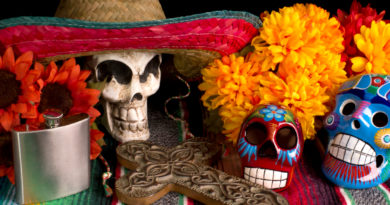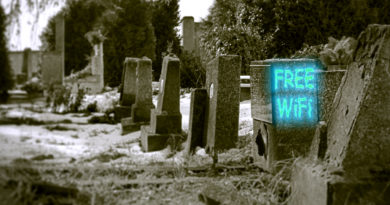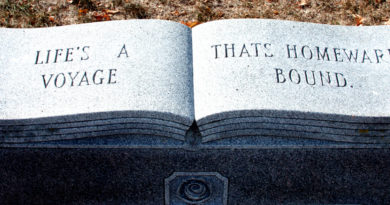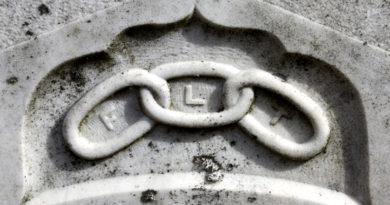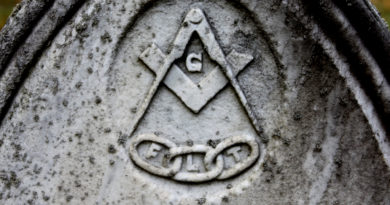Cemetery Headstone Symbols: Treestones
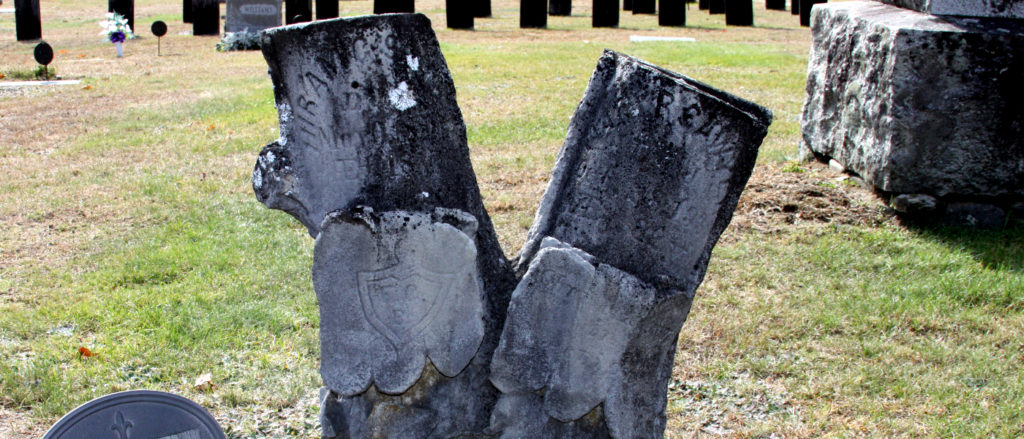
While visiting a cemetery, you might have wondered about an old tombstone design you saw and what it means. This article explains what a tree stump or tree trunk represents, which are generally referred to as “treestones.”
The Treestone Symbol
Typically found in older cemeteries, this symbol resembles the trunk of a tree in three dimensions, but the height, circumference, tree species and overall appearance can vary dramatically.
Collectively known as “treestones,” these headstones might resemble the short, stubby tree stump left after a tree is chopped down a few inches from the ground or a soaring, column-like tree trunk (without branches) that stands anywhere from 3 to 12 feet (roughly 1 to 3.7 meters) tall. For example, the treestone shown in the photograph above (located in a cemetery in Maine) stands about 3.5 feet (roughly 1 meter) high.
Regardless of its height, a treestone often includes more-than-usual design elements, symbols and information about the deceased because of its versatile style and greater available surface area. For example, while difficult to see due to its age, the split-trunk treestone shown above not only displays the names of two people, but it also features ferns (symbolizing sincerity); a crawling ivy (suggesting attachment and the Holy Trinity); and (on the lower left) a heraldic shield with the acronym “F.C.B.” The latter indicates that one of the deceased belonged to the Knights of Pythias, a fraternal society popular in the late 1800s and early 1900s.
A treestone might also indicate that the deceased was a member of another fraternal club – either Woodmen of the World, or Modern Woodmen of America – but in those cases, the acronym “WOW” or “MWA” usually appears somewhere on the marker, as well.
The Meaning of Treestones
Regardless of its ultimate height (e.g., a squatty tree stump or a towering tree trunk), inherent in the stone representation of a tree versus a standard gravestone “slab” is the symbolic concept of growth over time and life itself – since it takes a while for a tree of this size to grow from seed – that has been cut short.
In addition, trees generally symbolize strength, longevity and/or immortality in a cemetery context. (See also “Cemetery Headstone Symbols: Weeping Willow Tree.”)
Though less commonly used as gravemarkers these days, treestones probably rank as one of the most versatile cemetery headstone designs ever conceived. Because it comprises three-dimensions, treestones offered greater design freedom for masons in terms of tree species, height, style, etc., versus a typical single-sided gravestone. Thus, you might discover a cemetery treestone rife with additional death-related symbols and information around/along its entire surface versus a typical gravemarker.
Popular from the late 1880s to the early 1900s, the prevalence of treestones in cemeteries reflected the interest in “rusticity” – a desire for simplicity and getting back to nature. This movement occurred late in the long, strait-laced reign of Queen Victoria. The “rusticity” trend proved so popular that retailer Sears, Roebuck & Co. even sold treestone headstones in its catalogs back in the day.


